1000 Words for Rebel-Bandit
/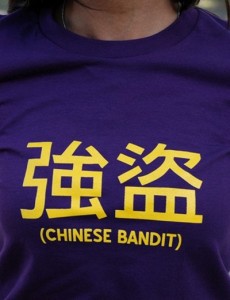 Winter is such a good time for working-out and getting extra sleep; not a great time for sitting in a chair and writing. But you're in luck because this book in my lap is due back to the library and it's full of notes that would be lost if I didn't do this blog thing now. Also, I'm sipping some super-duper, so secret 3-ears-never-hear Chinese herbal tonic.
Winter is such a good time for working-out and getting extra sleep; not a great time for sitting in a chair and writing. But you're in luck because this book in my lap is due back to the library and it's full of notes that would be lost if I didn't do this blog thing now. Also, I'm sipping some super-duper, so secret 3-ears-never-hear Chinese herbal tonic.
In my quest to try to understand the origins of Chinese Martial arts I've come to the conclusion that in the past there were people who practiced a religious tradition of exorcistic theater interlaced with Daoist liturgy, meditation, and daoyin, who used sophisticated internal martial arts technology, healing, talisman, re-telling history, with dance, puppets, mudras, music, processions, and animal sacrifice-- all together in a single art-event, ritual happening. The people practicing these traditions did so through violence times, sometimes as participants in rebel movements, sometimes as part of bandit societies, and sometimes as citizens of weak or powerful central governments.
And I have also come to the conclusion that all of these skills could be arts unto themselves, that individuals throughout the ages have sometimes chosen to be exclusively musicians, or martial artists, or dancers. And, each of these traditions easily lend themselves to composites of more than one art. For instance, it was common for a scholar, a man who had passed an Imperial exam, to spend his evenings singing or reciting the histories while playing music with friends in a wine house. It was also common not to do both. (Just a note here, because it keeps coming up: For some reason only historians understand, a person who passed the lowest level of the Imperial exam is generally referred to in English texts as a member of the gentry or the elite. I'll never be comfortable with this.)
. Great book! Remember that lame cliche that goes, there are a 1000 words for snow in the Eskimo language. Well, reading this book one is inclined to think there are a 1000 words for rebel-bandit in Chinese.
Here are some of the fun ones: ..."(W)ulai" (local tough), "liumang" (hooligan), "youshou" (loafer), "xianshou" (idler), "wangming" (desperado), "guanggun" (bare sticks), and "wuji zhi tu" (unregistered ones) on the one hand, and [there are] more ambiguous appellations, such as haojie (unfettered hero, "haojun" (unfettered hero), "renxia" (knight errant), and "youxia" (wandering knight errant) on the other. (p.21)
Robinson breaks through a lot of conventions. He chooses to write about the middle of the Ming Dynasty (around 1500) because it is considered a time of relative peace, but he shows us how totally violent it was. He challenges the standard focus on "gentry," meaning men who have passed the lowest level of civil exam, and instead looks at the entire breath of men and women, powerful, and not so powerful. But his particular interest is the unfettered man of force and his ability to transcend and traverse all levels of society.
"Illicit violence was an integral element of Ming society, intimately linked to social dynamics, political life, military institutions, and economic development. Nearly everyone in China--from statesmen and military commanders to local officials and concerned social thinkers, from lineage heads and traveling merchants to farmers , transport workers, and peddlers in the street--grappled with the question of how to use, regulate, or respond to violence in their lives." (p. 2)
"The role of marital arts, martial ethos, and military institutions in late imperial society forms an important if still little-explored facet of China's economy of violence. Violence in theater, literature, and the visual arts provides valuable insight into the economy of violence, as does the role of physical and symbolic violence in religious practice, doctrine, and imagery....and popular concepts of honor, justice, and vengeance in various parts of China during the different historical periods...(p.2)
Robinson focuses on violence closest to the capital, exploring the idea that it would be more likely that the government would have some sort of monopoly on violence nearer to the capital than in far away provinces. In fact, if that was true, and the 40,000 pirates off the southern coast (far from the capital) at the time would suggest it was, than violence was everywhere--because the capital was teaming with bandits and rebels.
....[P]rohibitions forbade bearing arms in certain contexts, most notably the strict laws against arms in or around the capital, especially the imperial palace. Despite the extra security measures taken in Beijing, the prohibition against bearing arms in the capital was not observed. Gangs of lahu, or urban gang members, brandishing knives, metal whip-chains, cudgels, swords, and various other weapons were frequently reported on the streets of Beijing during the fifteenth and sixteenth centuries. The violations certainly owe something to Beijing's enormous and very mobile population (between 800,000 and one million by 1500). (Robinson p.93)
He convincingly argues that it was common for bandits and various sorts of highway robbers to be part of patronage networks. These networks protected them to some extent but also meant that local magistrates or other types of officials or men of power were getting a cut of the loot. This allowed for complex negotiations which might mean that a particular group of bandits lived in one region and robbed in another. The Ming Dynasty was enormously wealthy and probably the best commercial environment on earth at the time. It may have also been the most crime ridden because nearly everyone was "on the take" in one way or another.
This jives with Esherick's description of Shan Dong province during the late Qing Dynasty in The Origins of the Boxer Uprising. Esherick describes a situation where it was common for bandits to rob neighboring towns across provincial boarders but to play the roll of protector for their own villages.
During the Ming Dynasty these patronage networks permeated the society right up to the eunuchs surrounding the Emperor and even the Emperor himself. (In 21st Century China we call these networks "guanxi" or "connections," and the result is widespread corruption. However the current government seems to have effectively suppressed armed bandits on horseback.)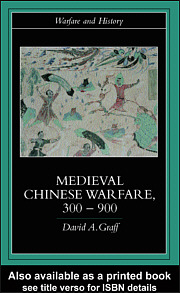 There is a huge ethnic component to the violence and banditry but it is sometimes hard to sort out. I also recently picked up a book by David A. Graff called Medieval Chinese Warfare, 300-900. Graff explains several things which are highly relevant. During the lead up to the Tang Dynasty (600 CE) the region we call China developed every conceivable method for putting together groups of men to fight. That accumulated knowledge of military organizational experiments was well documented and continued to be used in all subsequent Dynasties to gather huge armies, militias, retainers, or rebels. The other factor is that while infantries were used extensively and, if well trained, could be effective on the battle field, they were most useful for occupying an area or defending against a siege. Cavalries were what won most battles and most wars. Graff picked the year 300 to start his study because that was the era when the technological innovation of stirrups became pervasive. Cavalries were made up mostly of Turks and Mongolians. Lastly, reading about the early Tang Dynasty it is easy to get the impression that China has at least nine distinct regions capable of raising armies for the purpose of defending themselves or attacking their neighbors. A civil war with nine different regions competing for dominance is always brewing underneath the apparent stability of every "Chinese" Dynasty.
There is a huge ethnic component to the violence and banditry but it is sometimes hard to sort out. I also recently picked up a book by David A. Graff called Medieval Chinese Warfare, 300-900. Graff explains several things which are highly relevant. During the lead up to the Tang Dynasty (600 CE) the region we call China developed every conceivable method for putting together groups of men to fight. That accumulated knowledge of military organizational experiments was well documented and continued to be used in all subsequent Dynasties to gather huge armies, militias, retainers, or rebels. The other factor is that while infantries were used extensively and, if well trained, could be effective on the battle field, they were most useful for occupying an area or defending against a siege. Cavalries were what won most battles and most wars. Graff picked the year 300 to start his study because that was the era when the technological innovation of stirrups became pervasive. Cavalries were made up mostly of Turks and Mongolians. Lastly, reading about the early Tang Dynasty it is easy to get the impression that China has at least nine distinct regions capable of raising armies for the purpose of defending themselves or attacking their neighbors. A civil war with nine different regions competing for dominance is always brewing underneath the apparent stability of every "Chinese" Dynasty.
Jumping back to the Ming Dynasty, the Turks are gone (they went to Turkey) but there are lots of mounted Mongols serving as elite forces guarding the boarders, putting down uprisings, and sometimes protecting trade routes or even the capital. There were also Hui people, Muslim families who are ethnically Han, who lived largely in the regions just south of the capital. The Hui were heavily represented in the cavalries, and in the military in general. The regular, and the various irregular but official, troops lived in large concentrations near the capital. When the country was not actually at war, the horses used by the cavalry were supposed to be kept 'ready for action' by families registered for that purpose. So war horses were widely available throughout the empire. And everybody had weapons.
Robinson found this legal code:
Everyone who privately possesses armor for horse or men, shields, tubes of fire [a primitive gun], a catapult for throwing fire, banners and signaling devices and the like--military equipment that is forbidden to the people--will, for one such item, receive eighty strokes of the heavy bamboo. for each [additional] item, add one degree. If he manufactures the items privately, add to the punishment for possessing it privately, one degree. In each case, the punishment is limited to one hundred strokes of the heavy bamboo and exile to 300 li. If it is not complete [so it can not be used], there is no penalty. He may be ordered to deliver it to the government. Bows and arrows, lances, swords, and crossbows, as well as fishing forks and pitchforks, are not within the category of prohibited objects. (Robinson p.91)
Eunuchs are an interesting part of the story. Many of them came from Hui villages. There are accounts of whole villages castrating their young men because they heard that the Emperor was seeking new eunuchs. It was common in certain regions for the third son to be castrated in hopes that he could become a eunuch. So there were a lot of eunuchs running around (just in case you were wondering). Eunuchs did fight, and often commanded troops. Just as an aside, I wonder if there were martial arts practices specifically for eunuchs? Is this another possible source for the development of internal martial arts? It would make sense because without the male hormones they wouldn't be able to build or keep muscle. They would have had a type of weakness which did not have to be cultivated, but which might lead to a unique sort of martial prowess. After reading about all the eunuchs, I'm starting to believe the story that Dong Haichuan (the founder of Baguazhang) was, as rumored, a eunuch. 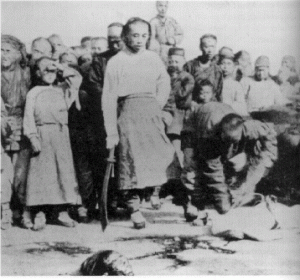 The complete separation of civil and military (wen and wu) legal systems was a real disaster because it meant that wherever a military group was stationed, small groups of soldiers could rob and loot without being subject to the civil authorities. This led to all kinds of patronage and intimidation. And if you got pretty good at organizing bandit groups, why not strike out on your own? Even start a rebellion? Individuals with in these bandit groups often managed to keep their identities as soldiers or imperial cavalry, sometimes going back and forth, or simply maintaining both identities simultaneously.
The complete separation of civil and military (wen and wu) legal systems was a real disaster because it meant that wherever a military group was stationed, small groups of soldiers could rob and loot without being subject to the civil authorities. This led to all kinds of patronage and intimidation. And if you got pretty good at organizing bandit groups, why not strike out on your own? Even start a rebellion? Individuals with in these bandit groups often managed to keep their identities as soldiers or imperial cavalry, sometimes going back and forth, or simply maintaining both identities simultaneously.
In order to maintain control, both the central government and local government often chose to enlist, appease, or co-opt rebel-bandits:
Integrating these various kinds of violence into a bureaucratic order was always a calculated risk, and the line dividing defenders of the imperial order from its challengers often blurred with disturbing ease. Writing on developments in Jiangxi during the early sixteenth century, Lin Ruozhou observed, "One variety of fierce bare sticks initially claims to be assisting officials to kill bandits, but in the process colludes with them, storing stolen goods for profit. Later these folds take up for a living the false accusation of commoners to extort goods from them. The only thing they fear is the return of peace." (Robinson p.90)
There is lots of cools stuff in this book. At one point the wife of a rebel-bandit named Tiger Yang takes over and goes on a series of raids on the capital before finally being caught and executed. At another point 350 monks from Shaolin Temple are used to help put down a rebellion but 25% them are slaughtered in the first battle.
It is easy to forget that food was always scarce in the old days. Soldiers often worked for free in the hope of being fed. One common system was that as soldier's family was responsible for keeping him supplied with food or money. It was a form of tax on the family, and since not everyone had family serving in the military it was a tax with some prestige. Still families often wanted to get out of it, which was made easier if the soldiers were far away, or if they were gone for a long time. Sometimes they were two months away from receiving a message for as long as twenty years. Long enough to start a new family.
Bandits, Eunuchs, and the Son of Heaven is not light reading, but it is very readable! If you like this topic, I recommend it. I got the book because I read the "Conclusion" on Google Books (p. 163) and found it intriguing. Perhaps you will do the same?

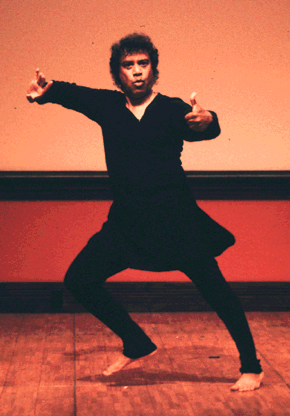 gfu on the brain.” It’s a possibility, I admit. Sometimes I get excited and I start to see martial arts in everything (Richard Rorty would call it the narcissistic tendency of powerful ideas). I can use Kungfu power to scrub the dishes. I can use maximum muscle tendon twisting to wring-out the laundry. I can set the table “the way a beautiful woman would do it,” (that’s an alternate name for Baguazhang seventh palm change).
gfu on the brain.” It’s a possibility, I admit. Sometimes I get excited and I start to see martial arts in everything (Richard Rorty would call it the narcissistic tendency of powerful ideas). I can use Kungfu power to scrub the dishes. I can use maximum muscle tendon twisting to wring-out the laundry. I can set the table “the way a beautiful woman would do it,” (that’s an alternate name for Baguazhang seventh palm change). I’ve had a taste of several different styles of African and African Diaspora Dances but my actual training was in Congolese and African-Haitian Dance. My Congolese Dance teacher, Malonga Casquelourd, learned to dance from soldiers on army bases.
I’ve had a taste of several different styles of African and African Diaspora Dances but my actual training was in Congolese and African-Haitian Dance. My Congolese Dance teacher, Malonga Casquelourd, learned to dance from soldiers on army bases. 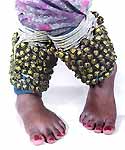
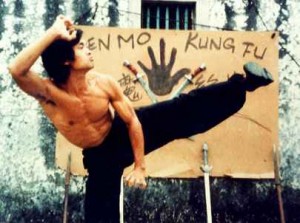 In China, the traveling theater functioned as a subversive organizing tool and a way to hide martial arts training. It was a religious devotional act, watched by the gods (they would literally carry the statues of the gods out of the temples to watch the performances), it was sometimes a ritual exorcism too. The theater was the source of most people's knowledge of history, and it's characters were both gods and heroic ancestors.
In China, the traveling theater functioned as a subversive organizing tool and a way to hide martial arts training. It was a religious devotional act, watched by the gods (they would literally carry the statues of the gods out of the temples to watch the performances), it was sometimes a ritual exorcism too. The theater was the source of most people's knowledge of history, and it's characters were both gods and heroic ancestors.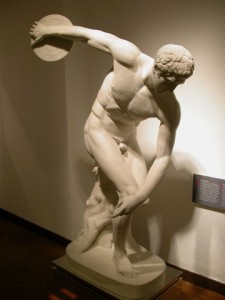 Olympic Champion chosen by highest individual total points....
Olympic Champion chosen by highest individual total points....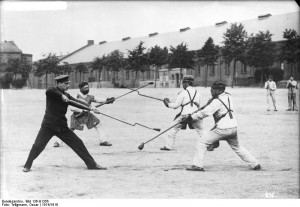 I just finished reading Paul A. Cohen's book,
I just finished reading Paul A. Cohen's book,  The book is a translation of a short manual about Xingyi training from the 1920's, supposedly used by
The book is a translation of a short manual about Xingyi training from the 1920's, supposedly used by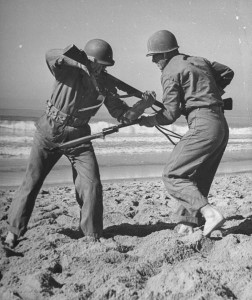 The introduction of Rovere's book claims that the famous martial artist's Sun Lutang and Wang Xiangzhai both taught for the
The introduction of Rovere's book claims that the famous martial artist's Sun Lutang and Wang Xiangzhai both taught for the 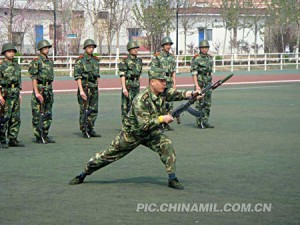 Nearly half of
Nearly half of 